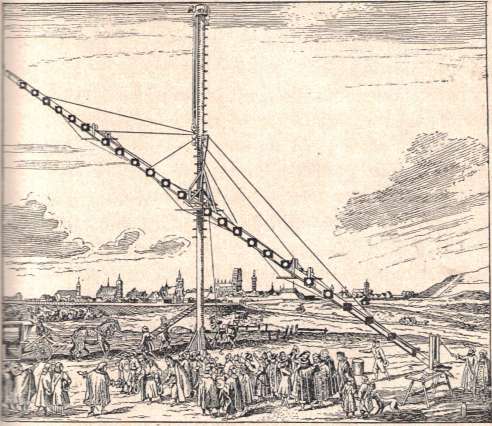Christiaan Huygens and the biggest telescopes of the 17th Century
The 17th century was a very prosperous time for science, with advances made in physics, mathematics, chemistry, and the natural sciences. However, it is possible that the crowning accomplishments were made in the field of astronomy. Several planets and moons were discovered for the first time in a century, accurate model was used to predict the movements of the planets, and the law of universal gravitation was devised.

Christiaan Huygens was born in Holland in 1629 and he was a mathematical genius who also invented several important mechanical devices including the pendulum clock. He had a deep understanding of astronomy, optics, mathematics and mechanical devices. And he built some of the largest telescopes of the 17 th century.
Being a contemporary of Galileo he heard about Galileo’s telescope and he set out to improve on the design. One of the liabilities of refracting telescopes like the one that Galileo built was that because of optical problems they caused distortion in how things looked. This was a phenomenon called chromatic aberration. Huygens discovered, after much experimentation, that this problem could be lessened by building lenses with much longer focal lengths. And using this discovery he built telescopes that were as long as 120 feet.
He also used his telescopes to make some discoveries under the night sky. One of his most important discoveries was of the rings of Saturn. He wasn’t the first one to actually see them. Galileo did that. But because of chromatic aberration Galileo’s telescope wasn’t good enough to resolve the rings into what they truly were. All Galileo saw was what he described as a tri-form planet which was composed of a large center section that had a section attached to each side. He described these side sections as being much like the handles of a vase. Huygens with his better telescopes could resolve the image of Saturn better and see what was really there and in 1656 he published his findings. He described Saturn as being composed of a central globe much like Jupiter but girdled by a thin flat ring that did not touch it.
Other discoveries by Huygens
He also discovered Titan which is the first of Saturn’s moons. And his sketches of the Orion nebula are the first known sketches of it and today the center of this nebula is named after him as the Huygens region. He also discovered several interstellar nebulae and some previously undiscovered double stars.
He called his style of telescope “tubeless” because it was an open air frame without a tube; and while he did build a monster that was 120 feet long it was cumbersome and difficult to use. Most of his observations and discoveries were made with smaller telescopes around forty feet in length.
Huygens made some important contributions to the science of astronomy with his discoveries and to the art of telescope making with his work in optics and chromatic aberration. He also built the largest telescopes of the seventeenth century.
